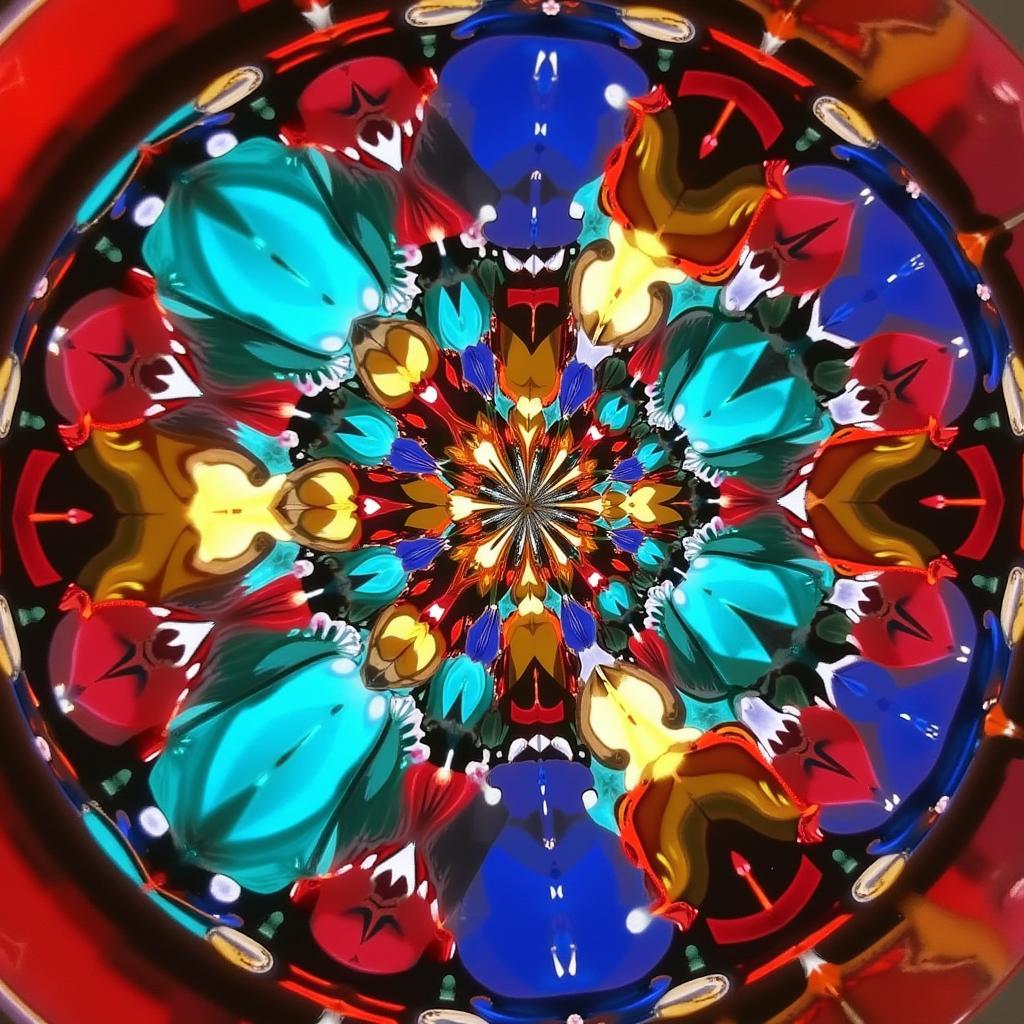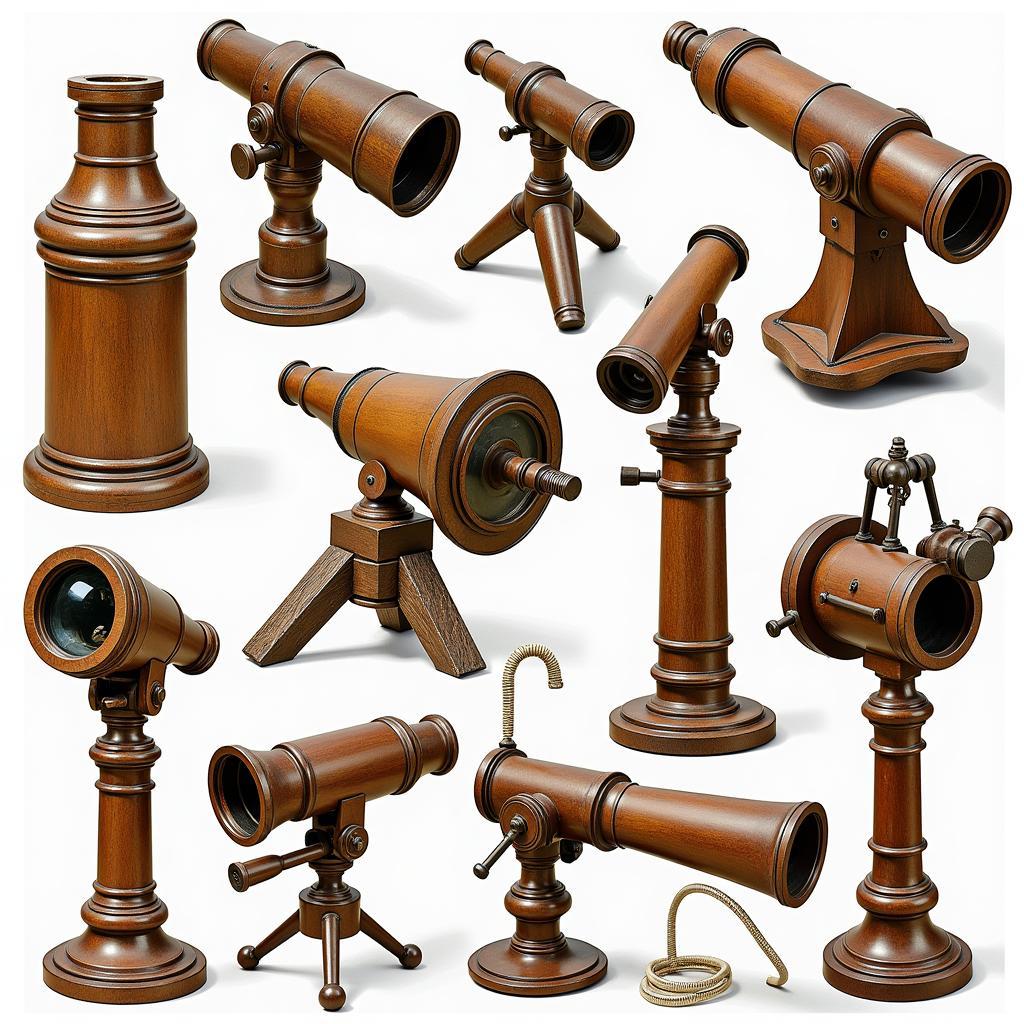Kaleidoscope Art, a mesmerizing fusion of art and science, captivates the imagination with its vibrant colors and intricate, symmetrical patterns. This art form, utilizing the reflective properties of mirrors and the beauty of colorful objects, creates a world of endless possibilities within a seemingly simple tube.
What Makes Kaleidoscope Art so Unique?
Kaleidoscope art stands out due to its inherent ability to generate unique and unrepeatable patterns. Unlike a static painting or sculpture, a kaleidoscope is interactive. Each turn of the kaleidoscope’s body rearranges the colored elements within, resulting in a completely new and breathtaking visual experience.
 Kaleidoscope Patterns
Kaleidoscope Patterns
A Brief History of Kaleidoscopes
Scottish physicist Sir David Brewster invented the kaleidoscope in 1816 while conducting experiments on light polarization. The name “kaleidoscope” originates from the Greek words “kalos” (beautiful), “eidos” (form), and “scopos” (to view). Brewster’s invention quickly gained popularity, evolving from a scientific tool into a beloved toy enjoyed by people of all ages.
The Art of Creating Kaleidoscope Magic
Creating a kaleidoscope involves more than just arranging colorful bits inside a tube. It’s a delicate dance between science and art. The angle of the mirrors, the choice of materials for the objects inside the chamber (often glass, beads, or crystals), and the craftsmanship of the kaleidoscope’s exterior all contribute to the final visual symphony.
Types of Kaleidoscopes
Over the years, artists and crafters have developed numerous types of kaleidoscopes, each with its own unique charm:
- Traditional Kaleidoscopes: These feature a rotating chamber filled with loose objects.
- Teleidoscopes: Instead of an object chamber, teleidoscopes use a lens to transform the outside world into kaleidoscopic patterns.
- Polariscope Kaleidoscopes: These utilize polarized light to create vibrant and constantly shifting patterns.
 Types of Kaleidoscopes
Types of Kaleidoscopes
Kaleidoscope Art Beyond the Tube
While many associate kaleidoscopes with physical objects, the concept of kaleidoscopic art has transcended its physical form. Today, digital artists and graphic designers use software to recreate and expand upon the captivating patterns found in traditional kaleidoscopes.
Think of the vibrant and ever-changing visuals seen in music videos, light shows, and even architectural installations. These are often inspired by the mesmerizing effects of kaleidoscope art.
Exploring Kaleidoscope Art in Everyday Life
Looking for ways to incorporate the magic of kaleidoscope art into your life? Consider these ideas:
- Visit a local art fair or craft show: Burlington Art Hop is a great example of an event where you might find unique and handcrafted kaleidoscopes.
- Explore online galleries: Many talented artists showcase and sell their kaleidoscope creations online.
- Try your hand at making your own kaleidoscope: Kits and tutorials are readily available for various skill levels.
Kaleidoscope Art: A Timeless Source of Wonder
Whether you’re captivated by the intricate patterns within a traditional kaleidoscope or mesmerized by the digital interpretations of this art form, there’s no denying the enduring appeal of kaleidoscope art. It’s a captivating blend of science, creativity, and visual delight that continues to spark joy and wonder in people of all ages.
Frequently Asked Questions about Kaleidoscope Art
1. What makes the patterns in a kaleidoscope symmetrical?
The symmetrical patterns in a kaleidoscope result from the precise arrangement of mirrors inside the tube. Typically, two or three mirrors are placed at specific angles to create reflections and multiple images of the objects within the chamber.
2. Can you use any materials inside a kaleidoscope?
While colorful glass pieces are common, artists often experiment with various materials like beads, crystals, paper, and even natural elements like dried flowers or small shells to create unique effects.
3. Is kaleidoscope art only for children?
Absolutely not! While kaleidoscopes are often associated with childhood toys, the artistry and craftsmanship involved in creating high-quality kaleidoscopes appeal to adults as well.
4. What is the difference between a kaleidoscope and a teleidoscope?
A kaleidoscope uses a chamber filled with colorful objects to create patterns, while a teleidoscope replaces the chamber with a lens, allowing you to transform the world around you into kaleidoscopic patterns.
5. Where can I find more information about kaleidoscope art?
Online resources, art books, and even museums often feature sections dedicated to the history and artistry of kaleidoscopes.
Need More Inspiration?
- Learn about the intersection of art and architecture at the Kaleidoscope Performing Arts Center.
- Discover the vibrant world of Williamsburg Brooklyn Street Art for a different perspective on urban art.
For any questions or assistance, please contact us:
Phone Number: 02462573573
Email: [email protected]
Address: Savico Megamall, 7-9 Đ. Nguyễn Văn Linh, Gia Thụy, Long Biên, Hà Nội 10000, Việt Nam.
We have a 24/7 customer support team ready to help you.